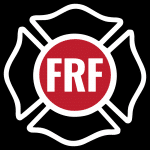Components of a Firefighter Fitness Program
I often get asked by Firefighters, EMTs and Paramedics to evaluate their current fitness programs and to possibly give some suggestions. I try to explain to the individual or group that in order to evaluate the program we must understand the physical demands of the job.
In layman’s terms it means this…Firefighters need to be ready for almost any event. They need to routinely carry loads of 50 to 100 pounds, climb stairs and ladders, swing heavy mallets and axes, drag heavy objects, hold, hoist and stabilize hose lines. They must also be able to recover quickly from these tasks and perform such activities for prolonged periods of time. Lets not forget that all these actions are routinely done in awkward positions and sometimes on unstable planes.
If you look at the above demands, tops on that list would be the emphasis on cardiovascular conditioning and recovery, next would be core strength and endurance to be able to carry the heavy weights in awkward positions, then you look at overall muscular strength and muscular endurance, flexibility and recovery. So basically, we need a functional fitness program that emphasizes circuit training, core training, balance and agility, joint flexibility, overall strength and endurance and must do this progressively to insure proper form and injury prevention. Doesn’t sound like your routine fitness program now does it?
Source
Gledhill, N. and Jamnik, VK. (September, 1992). Characterization of the physical demands of firefighting. Can J Sport Sci. 17(3):207-13.



